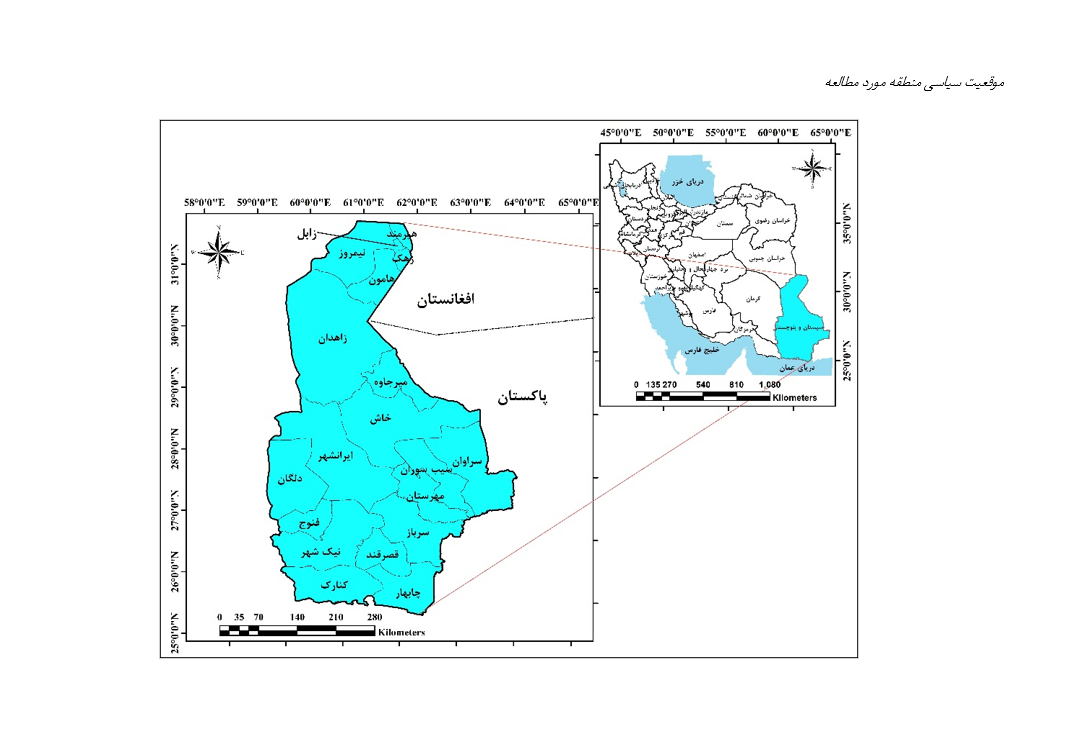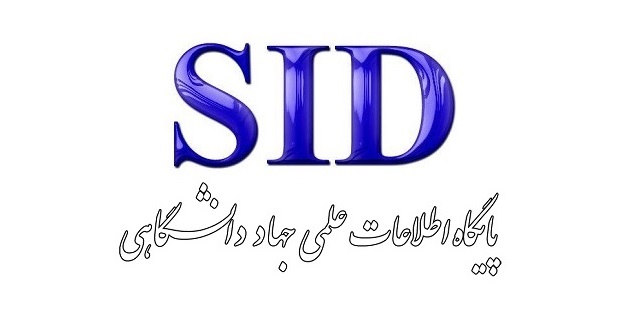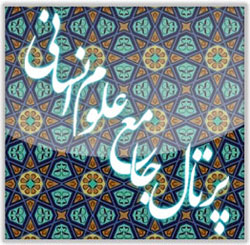تحلیل کیفی عوامل سیاسی و جامعه شناختی همگرایی و واگرایی قوم بلوچ
کلمات کلیدی:
عوامل جامعه شناختی, همگرایی و واگرایی, قوم بلوچ, گرندد تئوری, جنوب شرق ایرانچکیده
هدف پژوهش حاضر شناسایی عوامل جامعه شناختی همگرایی و واگرایی قوم بلوچ میباشد. تحقیق حاضر از نظر هدف، کاربردی و از نظر روش انجام آن، جزء روشهای کیفی بوده است. ابزار گردآوری اطلاعات مصاحبه ساختاریافته با خبرگان بوده است. جامعه آماری خبرگان و کارشناسان مسائل سیاسی و جامعه شناسی میباشد. از طریق روش دلفی و با اشباع نظری 15 کارشناس برای مصاحبهها انتخاب شد. جهت تجزیه و تحلیل اطلاعات از تحلیل کیفی و کدگذاری مصاحبهها با نرمافزار مکسکیودا (MAXQDA) استفاده شد. نتایج پژوهش در مورد عوامل جامعه شناختی همگرایی و واگرایی قوم بلوچ با استفاده از کدگذاریها منجر به شناسایی 50 مفهوم در قالب کدگذاری باز، 17 مقوله محوری و مولفه فرعی در قالب کدگذاری محوری، 2 مقوله انتخابی و مولفه اصلی در قالب کدگذاری انتخابی شد. بر اساس کدگذاریها 8 عامل سیاستهای توسعهای عادلانه دولت در بلوچستان، مشارکت سیاسی قوم بلوچ، امنیت و ثبات سیاسی در بلوچستان، اشتراکات دینی و هویتی قوم بلوچ با سایر اقوام، نقش رسانه و آموزش در همگرایی قومی بلوچ، روابط قومی بلوچ و ازدواجهای بینقومی، تجارت مرزی در بلوچستان و ایجاد فرصتهای شغلی و نقش مثبت نخبگان بلوچ مهمترین عوامل همگرایی قوم بلوچ در جنوب شرق ایران هستند. همچنین 9 عامل تبعیض و نابرابریی سیستماتیک در بلوچستان، گروههای معارض در بلوچستان، فقر و محرومیت استان سیستان و بلوچستان، قاچاق و اقتصاد غیررسمی در بلوچستان، اختلافات زبانی، قومی و فرهنگی، اختلافات مذهبی، سنتگرایی قوم بلوچ در برابر شهرنشینی و تغییر هویت، تأثیر منفی بازیگران خارجی بر قوم بلوچ و گسترش ناسیونالیسم بلوچ افراطی مهمترین عوامل واگرایی قوم بلوچ در جنوب شرق کشور میباشند.
دانلودها
مراجع
Afzali, R., Mahmoudi, A., & Bagheri, A. (2023). Explaining the Ethnic Policies of the Islamic Republic of Iran in Popular Films Using the Content Analysis Method. International Journal of Geopolitics, 19(69), 33-68.
Bagheri, M., Navah, A., & Shojaei Boroujerdi, H. (2022). Structural Modeling of Cultural, Social, and Political Factors Affecting Inter-Ethnic Convergence in Ahvaz City. Strategic Research on Social Issues, 11(3), 39-66.
Barzgar, N., Lotfi, H., Hasanabadi, D., & Rezvanian, M. T. (2019). The Role of Ethnic and Religious Policies in the Participation of Ethnic Groups in Security, Comprehensive Development, and Convergence with Emphasis on the Turkmen of North and Northeast Iran. Geography Quarterly (Regional Planning), 9(34), 433-455.
Chilla, T. E. E. S. C., & Cortés Landazury, R. H. (2012). On the territoriality of cross-border cooperation: Institutional Mapping in a multi-level context Institutions, ethnicity and conflict: behind social cohesion and fragmentation in the Department of Cauca. European Planning Studies, 20, 961-980. https://doi.org/10.1080/09654313.2012.673563 10.18601/01245996.v26n50.08
Darvishi, A. (2016). National Convergence of the Baloch People in the Context of Institution-Building of Jihad University (University of Isfahan).
Dashti, F. (2021). Investigating the Political-Security Factors Effective in Promoting the Convergence of Iranian Ethnic Groups; Towards Sustainable Security. Contemporary Socio-Political Developments in Iran Quarterly, 1(1), 112-136.
Doyle, O., Kenny, D., & McCrudden, C. (2024). Law and Religion: Convergence and Divergence on the Island of Ireland. Irish Studies in International Affairs, 35(2SP - 198), 240. https://doi.org/10.1353/isia.2024.a937171
Faraji, B., Hosseini, S. M., & Keramat, M. (2015). Factors of National Convergence of Ethnic Groups and Its Impact on the Sustainable Security of the Islamic Republic of Iran.
Guha, A. (2024). Hindu Nationalism and the Converging, Diverging and Intersecting Identities of Caste and Race in India: Dialogue, Dilemma and Discourse. Journal of Asian and African Studies, 24(3), 20-41. https://doi.org/10.1177/00219096241275409
Jahan Abadian, A., Kahrazeh, Y., & Mirlotfi, P. (2025). Investigating and Analyzing the Factors and Drivers Affecting National Convergence and Cohesion (Case Study: Baloch People in the Southeast of the Country). Applied Research in Geographical Sciences, 25(76), 162-177. https://doi.org/10.61186/jgs.25.76.14
Jokar, K., Bakhshayeshi Ardastani, A., Bagheri, F., & Allahkaram, A. (2021). Investigating the Status of Divergence and Convergence of Ethnic and Religious Minorities in the Country (Kurdish and Baloch Regions). Sustainable Development of the Geographical Environment, 3(5), 127-144.
Kazakova, M. V. (2018). Factors of convergence and divergence in the global economy: a brief review. Administrative Consulting, 1(7), 15-33. https://doi.org/10.22394/1726-1139-2018-7-96-110
Kim, Y. Y. (2017). Contextual theory of interethnic communication Oxford Research Encyclopedia of Communication. https://doi.org/10.1093/acrefore/9780190228613.013.493
Koushki, A., & Toulabi-Nejad, M. (2020). Sustainable Planning for the Development of Border Region Cooperation (CBC): Factors and Drivers Affecting the Sustainability of Border Region Unity. Journal of Applied Research in Geographical Sciences, 20(56), 115-140. https://doi.org/10.29252/jgs.20.56.115
Kurowska-Pysz, J. A. C. R., & Loures, L. (2018). Sustainable Planning of Cross-Border Cooperation: A Strategy for Alliances in Border Cities. Sustainability, 10(5), 1-26. https://doi.org/10.3390/su10051416
Lashkari, S., Mirferdi, A., Ahmadi, H., & Ahmadi, A. Y. (2024). Investigating the Relationship Between the Feeling of Relative Deprivation and Tribal Divergence in Mamasani and Rostam Counties. Applied Sociology, 35(1), 139-163.
Mason, T. D., & Galbreath, D. (2013). Ethnicity and politics Encyclopedia of Government and Politics.
Mirlotfi, M., Alavizad, S. A. M., & Hedayati-Amin, K. (2015). Investigating Social Cohesion in Maintaining Border Security with Emphasis on Ethnic and Religious Diversity (Case Study: Zabol County). Regional Planning Quarterly, 5(16), 57-70ER -.
Motagghi Dastnai, A., & Sepehvand, A. (2024). Future Studies of the Impacts of Virtual Networks on Political Orientation (Case Study: Lorestan Province)JO - National Studies Quarterly. 25(99), 35-59.
Najafpour, S., Tadayyon Rad, A., & Al-e Seyyed Ghafour, S. M. (2023). National Identity; Examining the Ethnic Factors Affecting the Divergent Behaviors of Youth (Case Study: 18 to 30 Year Old Youth in Ahvaz). Strategic Studies of Sports and Youth, 22(62), 453-478.
Pishgahi-Fard, Z. (2009). The Relationship Between the Dispersion of Iranian Ethnic Groups and Border Security. Geopolitics Quarterly, 5(1), 47-71.
Saba, C. S. (2021). Convergence or divergence patterns in global defence spending: further evidence from a nonlinear single factor model. Peace Economics, Peace Science and Public Policy, 27(1), 51-90. https://doi.org/10.1515/peps-2021-0017 10.1515/peps-2020-0012
Saglam, Y., & Önkan, Ö. (2025). Income Convergence and Divergence in European Regions: Insights and Policy Implications. Panoeconomicus, 1-28. https://doi.org/10.2298/PAN240925004S
Seifoddini, H. (2018). An Introduction to the Marxist Backgrounds of the National Question in Iran 1921-1979. National Studies Quarterly, 19(73), 35-56.
Smith, W. L. (2020). A divergence of interests: Critical race theory and white privilege pedagogy. Teachers College Record, 122(1), 1-24. https://doi.org/10.1177/016146812012200103
Statistical Yearbook of, S., & Baluchestan, P. (2015). Statistical Yearbook of Sistan and Baluchestan Province. Statistics and Population Section.
Suri, A., Alaei, S., & Rahmani, J. (2024). Presenting a Model of Cultural Adaptation of the Lur People in the Last Decade of the Fourteenth Century. Intercultural Studies, 19(58), 149-166.
Tramel, S. (2020). Convergence as political strategy: social justice movements, natural resources and climate change Converging social justice issues and movements. https://doi.org/10.4324/9781003000969-4
Whitehead, K., & Stokoe, E. (2015). Producing and responding to -isms in interaction. Journal of Language and Social Psychology, 34(4), 368-373. https://doi.org/10.1177/0261927X15586432
Zohairinia, M. (2023). Ethnic Identity in Iranian Society: Convergence or Divergence (Systematic Review of Quantitative Studies from 2001 to 2022). Social Issues of Iran, 14(2), 227-252. https://doi.org/10.61186/jspi.14.2.227ER -

چاپ شده
ارسال
بازنگری
پذیرش
شماره
نوع مقاله
مجوز
حق نشر 2025 Abbas Jahanabadian (Author); Yaser Kahrazeh; Parvizreza Mirlotfi (Author)

این پروژه تحت مجوز بین المللی Creative Commons Attribution-NonCommercial 4.0 می باشد.







